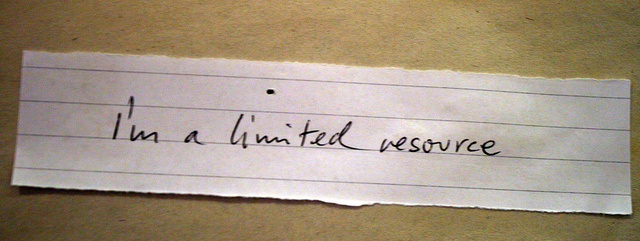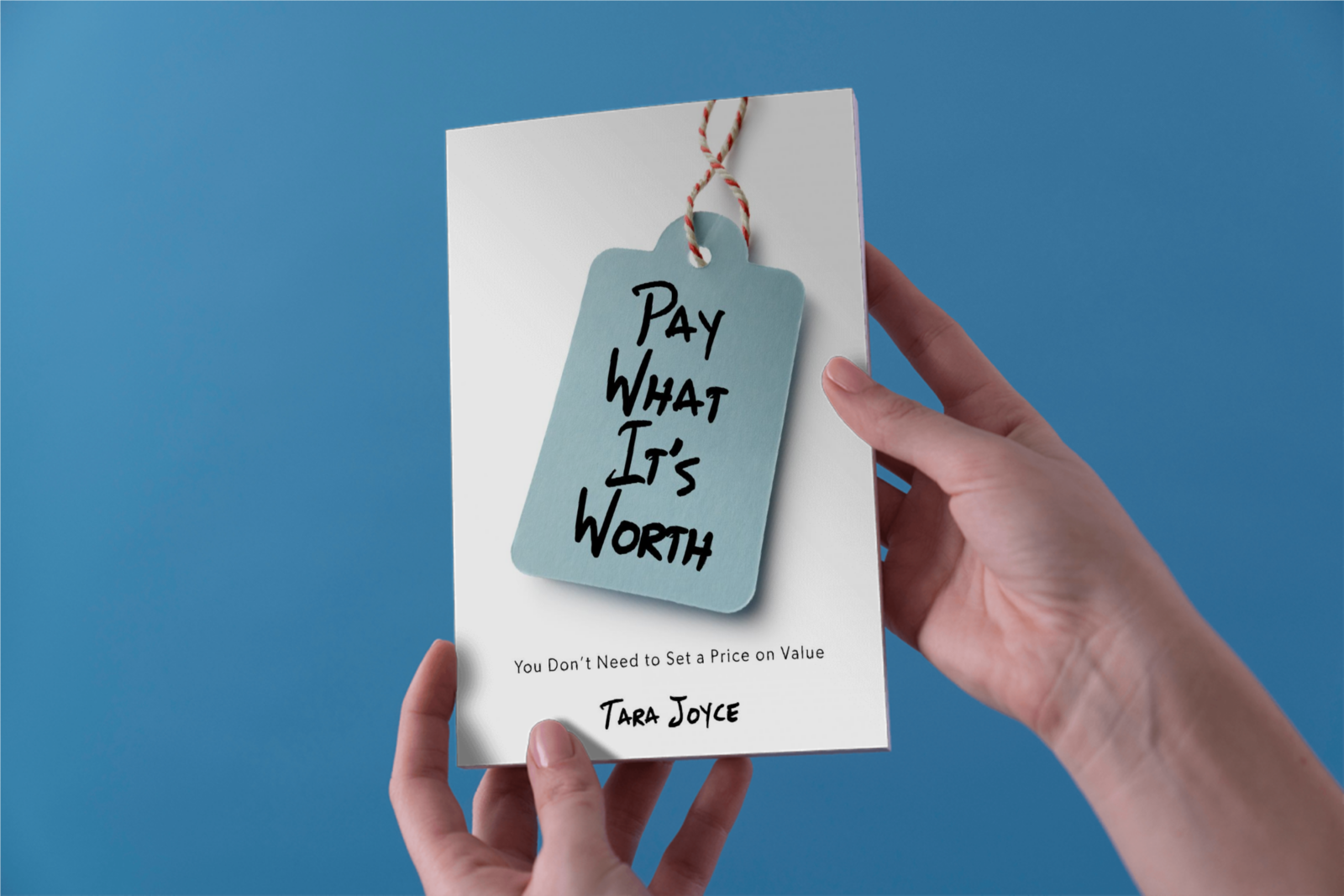
by Tara Joyce | Jul 17, 2014 | Pay What It's Worth Pricing

I want to share this fantastic example of how much we are motivated by our emotions when it comes to money, and valuing things.
Ask yourself:
Is the value of the Empire State Building high because the value of rent is high, or vice versa, is the value of rent high because the building is highly valued?
What do you think?
Does it change if I asked you to substitute WHAT you are valuing?
Is the value of a cow high because the value of calves and milk is high, or vice versa, is the value of milk and calves high because cows are highly valued?
In altering WHAT you are valuing, did your willingness to pay change?
This analogy’s purpose is to highlight that your willingness to pay is fluid, and not set. How you value things and what you are willing to pay depends on how you feel about (yourself and) the thing you are valuing.
Fascinating, isn’t it?
photo credit: Doug Wheller

by Tara Joyce | Jun 11, 2014 | Cultural Creativity

What if our words were thought of as a resource to be conserved and used wisely?
What if we saw the misuse of our words as a waste of precious resources, similar to the misuse of our oceans or another limited resource?
What if we saved our words? Saved them from carelessness, from thoughtless expressions, saved them from being used to harm people and the planet?
What if we learned to respect all our resources? Not just the one’s from the earth and that other posses, but the one’s that are personally our own?
What if we knew our expression as our most valuable resource? How would we change things if we knew the true cost of wasting it carelessly?
photo credit: quinnanya

by Tara Joyce | May 7, 2014 | My Journey | What's On My Mind, Pay What It's Worth Pricing

I was all set to release my first book on Pay What It’s Worth pricing last week, a book I’ve been writing in one form or another for, I don’t know… six years or so, but life got in the way, as it does.
Life, it seems, had a bunch to teach me, and specifically about PWIW.
Life had me thinking my book was a terrible lie. And then it had me thinking that there was so much missing from it.
See, that’s my problem with Pay What It’s Worth… always has been. There’s just too much to say. And it keeps growing. And I can’t get it down fast enough before it teaches me something new.
A New Truth
I’ve always felt very strongly about the communication around Pay What It’s Worth, in that I feel strongly about the importance of how I communicate what I am asking my customers to do when I allow them to set the price they pay.
It is my feeling that to be happy in the exchange both participants need to feel empowered, and that means holding both buyer and seller responsible for their contributions to the exchange.
Last week, as a seller, it became very clear that the biggest part of my job (beyond creating value) is to guide my customers towards a fair exchange with me — to support them in being responsible with their giving and in their relationship with me.
We all have our money stuff, and in choosing a system where I allow my customers to determine my value, I am entering into a relationship with their money stuff too.
A New Block to Build From
In asking my customers to pay what it’s worth, I’m asking them to experience the value they are receiving and to give fair monetary value in return for it.
And while that sounds simple in words, it’s terribly difficult in practice. And what I haven’t been totally responsible for, I can see now as a seller (and as a writer on the topic), is the truth of this.
It’s fucking hard to stay balanced and in integrity with money. It’s fucking hard to pay what it’s worth.
The truth is, if I’m asking people and all their money stuff to value me fairly, I had better provide ample support and understanding. Because what I am really asking is for them to be in a balanced relationship with me.
Is it fair of me to expect that they know what this looks or feels like? Especially in a “business” relationship?
Support for Giving Freely
Our relationship is not one where the customer gets to pay what they want. In offering that, I’d be creating a relationship where they’re free to put their money stuff on me, and I’m free to put my money stuff on them.
The intention for our exchange is empowerment and wealth creation. It’s not about want, it’s about meeting needs and exchanging fair value.
If I want this intention of need and fair value to stay true throughout my exchanges, I need to ensure all my guideposts indicate this. In my offering of paying what it’s worth, I need to ensure that I’m not creating space for my customers to default to paying what they want.
It’s important I protect myself from how easy it is, when our money stuff arrives, to make it about want.
As a seller it’s imperative I continue to do what I can to guide my customers towards being responsible in how they value me. This, it seems, is my biggest responsibility in our exchange outside of providing great value.
If I sincerely want our exchange to be about what we both can give, I need to acknowledge how hard that can be to act on. Only in my acceptance of this can I help my customers to be responsible to it.
photo credit: Kaytee Riek

by Tara Joyce | Feb 21, 2014 | Pay What It's Worth Pricing, Personal Branding

Value-For-Value
Pay What You Want
Pay What You Value
Gift Economy
Pay What It’s Worth
Collections of words. Collections of words that intend something similar, and yet different.
They all describe a concept. That you trust your customers to determine the value they receive from your work, and to give accordingly.
You can describe this concept, and your belief in it in many ways.
Value-For-Value
Pay What You Want
Pay What You Value
Gift Economy
Pay What It’s Worth
The words you use are a choice in how you design your communications. It’s your brand. Your experience.
What do you want and need to be valued in the exchange? How do you communicate your intent and the result you desire?
Value-For-Value
Pay What You Want
Pay What You Value
Gift Economy
Pay What It’s Worth
In the end, these terms may differ in their meaning but they describe one truth in their action. That you are a business that is choosing to create it’s own economy.
You’re criticizing the current economic system by creating your own system for valuing products and services. And it’s changing things.
Just as your life choices are creating the world you live in, your business choices are creating the economy you work and exchange in.
In trusting me to value you fairly, we’re creating an economy together where we step out of lack, and into a fair exchange of value, respect and love.
Value-For-Value
Pay What You Want
Pay What You Value
Gift Economy
Pay What It’s Worth
To start creating your economy, it starts with the ask. The intention of your action.
What do you intend to build with the economy you are creating? And how can you best express it?
What lies within the art of your ask?
photo credit: Iwan Gabovitch
for an inspiring talk on “The Art of Asking”, please watch: Amanda Palmer’s TED talk

by Tara Joyce | Nov 4, 2013 | Pay What It's Worth Pricing

An Exciting Concept
I learned about the concept of Pay What It’s Worth pricing as a result of an email from a reader, Jay Cowan. He recommended I check out the book called Secrets of the Wealthy Mind, as it discussed the concept of Innerpreneurs.
At the time (2009), there was only one book I knew that mentioned and identified Innerpreneurs as a group, and so I was fascinated.
Jay also mentioned that the author, Phillip Dignan, had “an interesting way of selling it”, referring to pricing system he used to sell the book — he let his customers decide what they paid for it.
It was the first time I had ever heard of someone doing such a crazy thing, and I was intrigued.
I read Secrets of the Wealthy Mind in one day, and it blew my mind. Dignan’s perspective on economic theory and pricing systems turned something on in me, and it helped expanded my mind to see that I’d been following a lot of economic rules that I didn’t believe in.
It supported me in seeing there were alternative models for pricing that would honour my values, ensure the integrity of my client relationships, and create greater possibilities for my own wealth creation.
An Exploration of Worth
During my time exploring Pay What It’s Worth pricing it has come to mean:
- Allowing my customers to determine the true value they place on what they have received.
- Not limiting my wealth potential by setting boundaries on the value placed on my service to others.
- Doing my best on behalf of my client, and trusting that my client with do their best on behalf of me.
- Creating business relationships built on integrity and trust.
- Accepting that my clients can value my work more, and less, than I do.
- Challenging faulty economic assumptions. Economic theory is based on the assumption of scarcity – why is that?
- Unmarketing. Not everybody is comfortable with the responsibility of consciously placing a monetary value on the service they are receiving. And they aren’t the right clients for me.
- An opportunity to increase my awareness on how I, and others in my world, give and receive money.
- An exploration of my self-worth, and true earning potential.
photo credit: gfhughes










